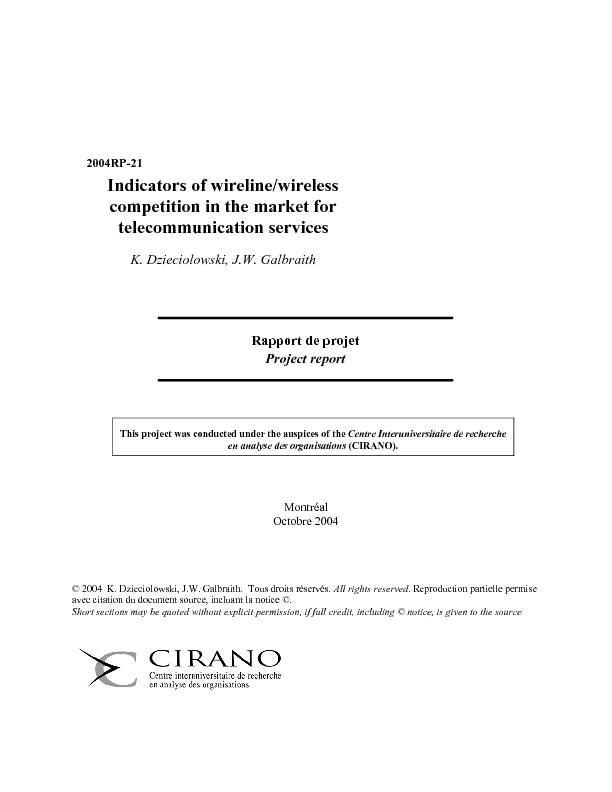Indicators of wireline/wireless competition in the market for telecommunication services
We address evidence that competition from wireless telecommunications may already be having a substantial effect on the market for wireline services, despite historical estimates of price elasticity suggesting substantial market power (weak competition) in wireline services, considering both the elasticity argument per se and the observable recent trends in the wireline market. Among other points, we suggest that:
[ - ]
- Arguments based on observed historical elasticities may be weak in cases where there exists a potential competitor offering a service whose price was substantially higher in the past, but where the price difference between the relevant products has lessened. In these cases, the competitor may have had little effect on demand in the past, but can have a much greater effect as the price difference narrows.
- We can use a logistic-type demand relation, with the price difference as a key factor, to model such situations. In the present case, doing so produces results compatible with a substantially higher absolute elasticity of demand than would be observable in historical data.
- With respect to observed trends in demand, we note that the total number of wirelines serviced by Bell Canada showed a remarkably stable pattern of seasonal and trend variation which has been interrupted quite abruptly over the last four + years. The change, in the direction of actual demand well below levels compatible with the previous trend, indicates substantial changes in the nature of the wireline market. Since the total market for telecommunications services has continued to expand over this time, this suggests changes in consumers' choices between different modes of telecommunication.
- Relating the wireline displacements to the numbers of wireless customers (for primary wirelines) or wireless and high-speed internet (for secondary and total wirelines) allows us to estimate wireline losses, producing numbers compatible with a reduction of up to 8% in the total size of the market for fixed wirelines as of the end of 2003 (after excluding approximately 3% of the competitive losses), relative to what demand would have been had the previous growth trend continued.




